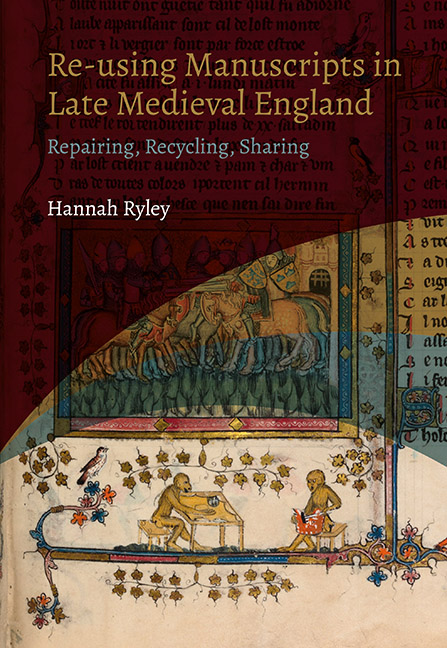4 - Second-Hand Books
Published online by Cambridge University Press: 16 July 2022
Summary
the slow long-term dance,
temporary ownership, possession and loss.
Roy Kelly, ‘Another Slice’
This chapter explores the second-hand movement of medieval manuscripts between people in the fifteenth century, paying attention to what they wrote about that circulation on to the leaves of books. A book was an ‘artefact for reading’ that could be converted into an ‘artefact for owning’, and the ownership of that artefact could change. Kelly's poem captures this, describing things moving second-hand as a ‘slow long-term dance’. In the fifteenth century, manuscripts became second-hand by a range of mechanisms: they might be sold, resold, bought, given, received, bequeathed, inherited, shared, even used as collateral for a loan. Manuscripts were ‘typically produced to outlive their first users […] an ambition made thinkable by the durability of medieval books’.That durable materiality was acknowledged by donors of common-profit books: the books they gave were to be used and re-used by an ongoing sequence of worthy recipients, but they also acknowledged that books might not last forever. This chapter understands fifteenth-century books to be durable commodities with use-values that resulted in their movement between people. Inscriptions in books offer glimpses of how books passed from one person to another, and sometimes give explicit indication of how the book was being valued at that moment.
Marginal annotations express aspects of second-hand book ownership or various forms of giving, or various forms of receipt. These notes offer an insight into contemporary medieval ideas about manuscripts, expectations of them and conventional modes of recording information about second-handedness. Of course, almost any fifteenth-century manuscript-book might qualify as being second-hand: to approach this topic, this chapter is informed by surveys of manuscript collections, which yielded examples of inscriptions that note the second-hand movement of books. From these surveys arose a sense of what second-hand book transfers typically looked like, as well as examples of specific inscriptions written into books. The notes are both historical record and historical practice and testify to contemporary modes of book re-use.
Here, second-hand refers to any later possession of books, after the first phase of ownership. The modern understanding of second-hand goods today includes not only things previously owned by others, but also the resale of those things for profit, sometimes for the benefit of charitable causes.
- Type
- Chapter
- Information
- Re-using Manuscripts in Late Medieval EnglandRepairing, Recycling, Sharing, pp. 141 - 182Publisher: Boydell & BrewerPrint publication year: 2022



